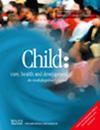Potential Efficacy of the MOVERS Professional Development Programme: A Pilot Randomised Controlled Trial
Abstract
Background
High-quality early childhood education (ECE) environments positively impact child outcomes. This study examined the potential efficacy of a professional development (PD) programme on improving the quality of the ECE movement environment and children's physical activity, motor, literacy and numeracy skills.
Methods
A 6-month RCT involving 5 ECE services and 157 children (mean age 3.84 ± 0.61 years) was conducted. ECE services were randomly assigned to the intervention group (n = 3) or wait-list control group (n = 2). The PD comprised five monthly face-to-face sessions, including theory, practice and reflective thinking components. Outcomes included the quality of the ECE movement environment (MOVERS), children's gross motor skills (TGMD-2), physical activity (GT3X accelerometers), fine motor skills (ASQ-3), receptive vocabulary (PPVT-4) and numeracy (PENS). All outcomes were assessed at baseline and follow-up. Data were analysed using linear mixed models (SPSS, Version 26) and effect sizes were calculated. Educator engagement was collected using questionnaires.
Results
Large effect sizes were reported for the quality of the ECE movement environment (d = 1.77–9.35). Medium to large effect sizes were reported for children's gross motor skills (d = 0.68–1.23), and small to medium effect sizes were reported for three subscales of the numeracy test (d = 0.43–0.63). In the intervention group, a significantly greater number of children moved from being at risk of delay or delayed to normal development in fine motor skills (Phi = 0.21). Educators reported that the PD content was relevant and clearly explained, highlighting the hands-on components as the most valued aspect.
Conclusion
The MOVERS PD pilot programme resulted in changes in educators' pedagogy and practice and in children's gross and fine motor skills and numeracy skills. Future studies with larger sample sizes will be important to confirm these results.


 求助内容:
求助内容: 应助结果提醒方式:
应助结果提醒方式:


